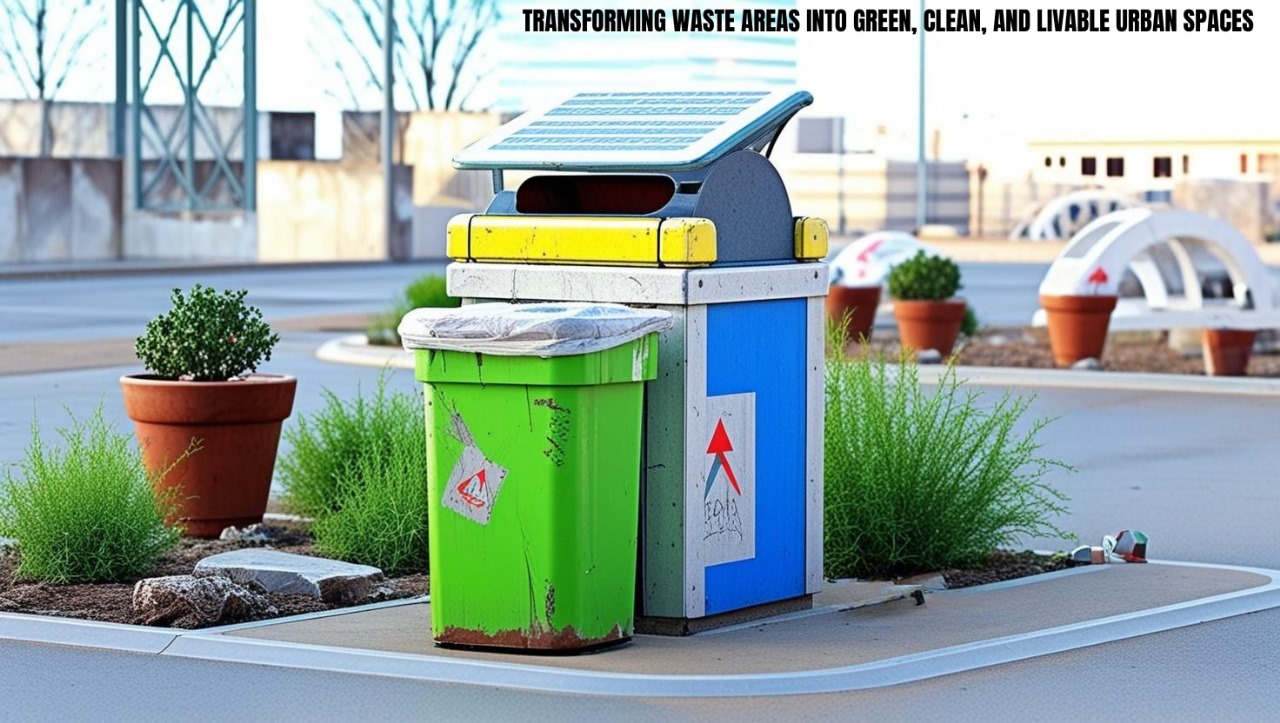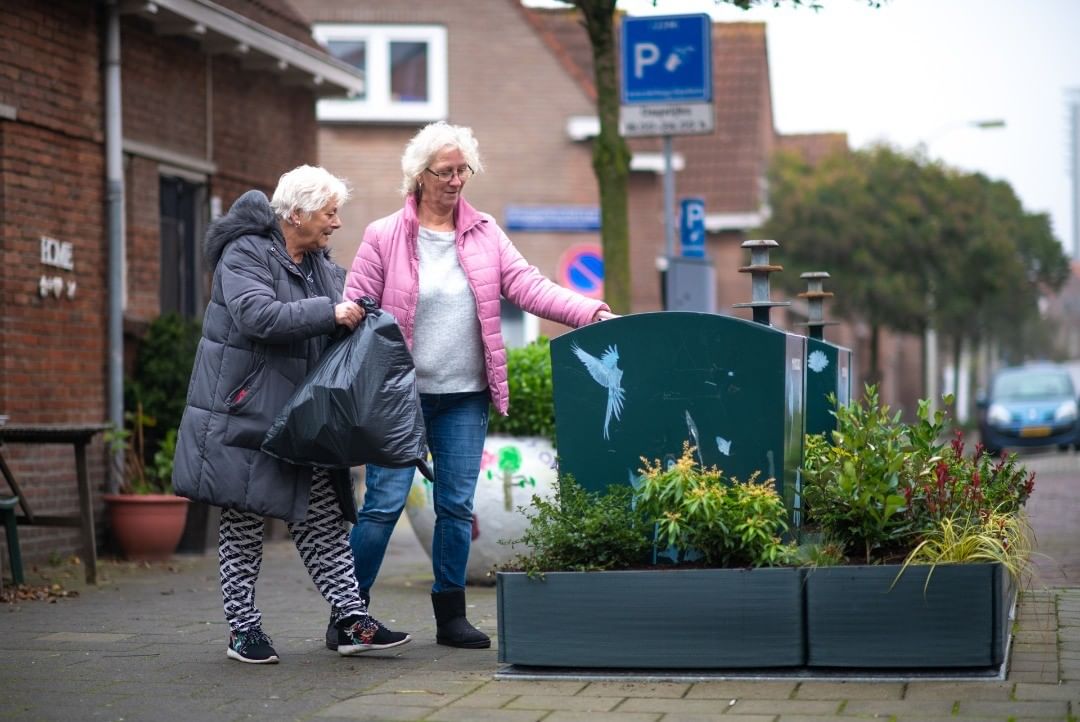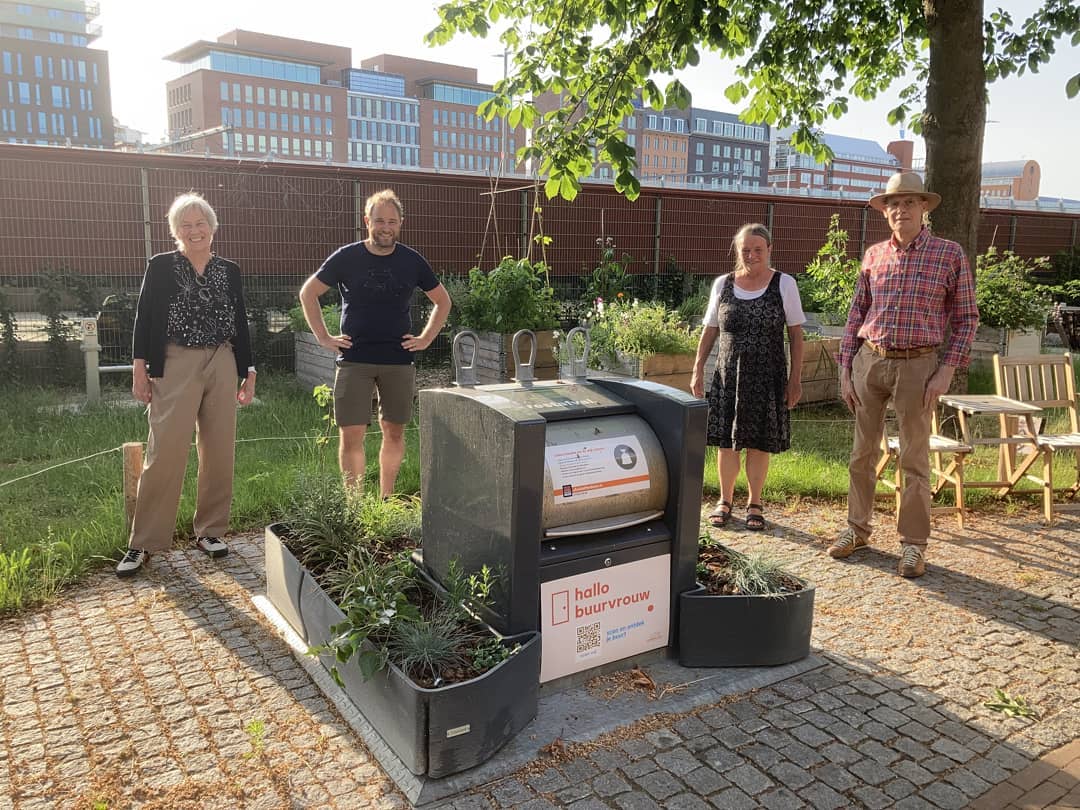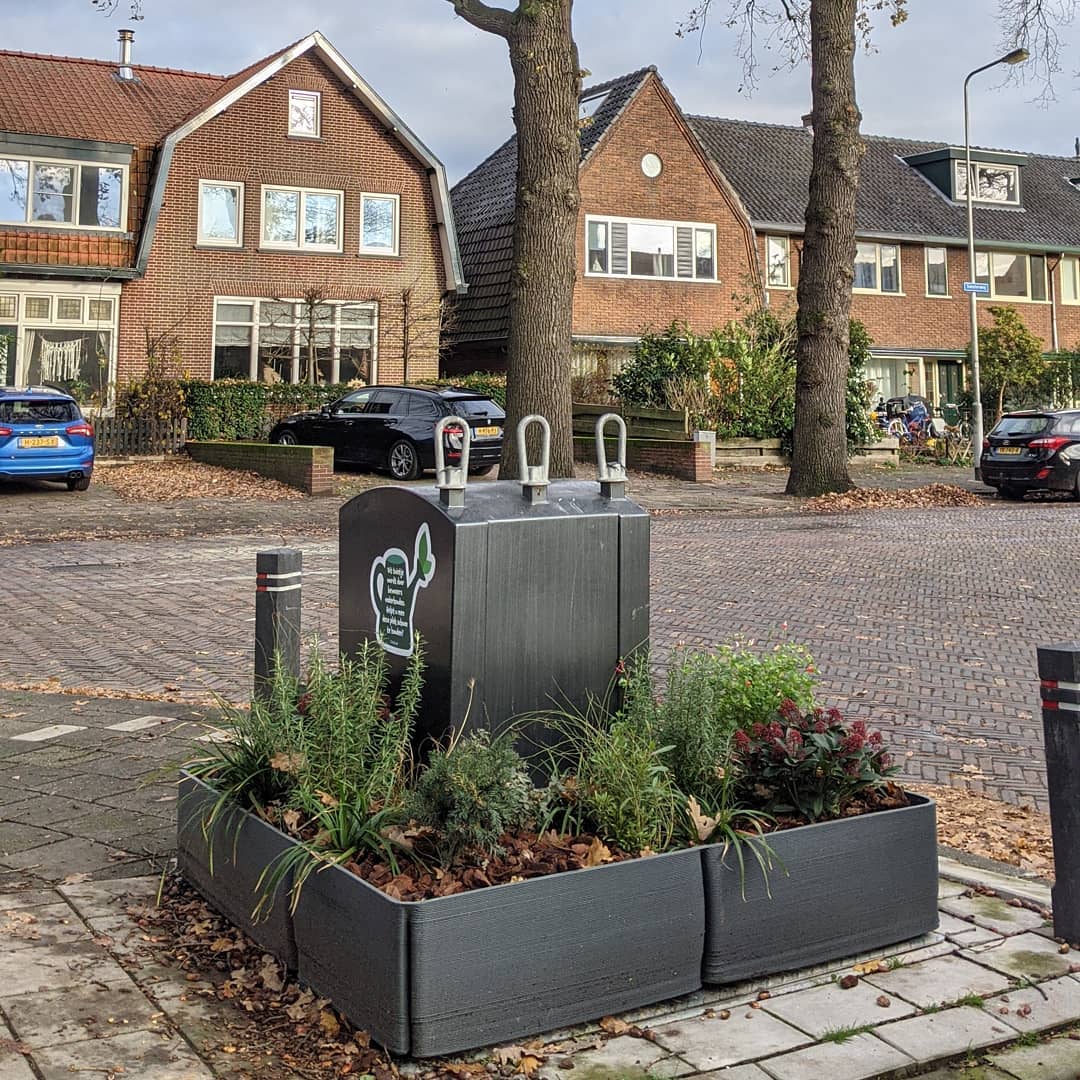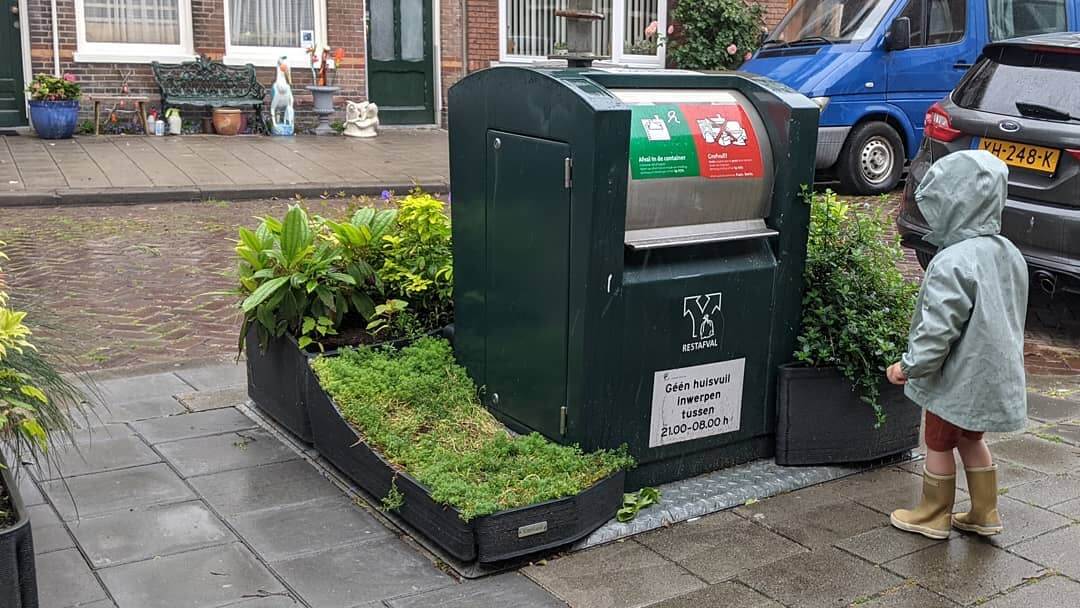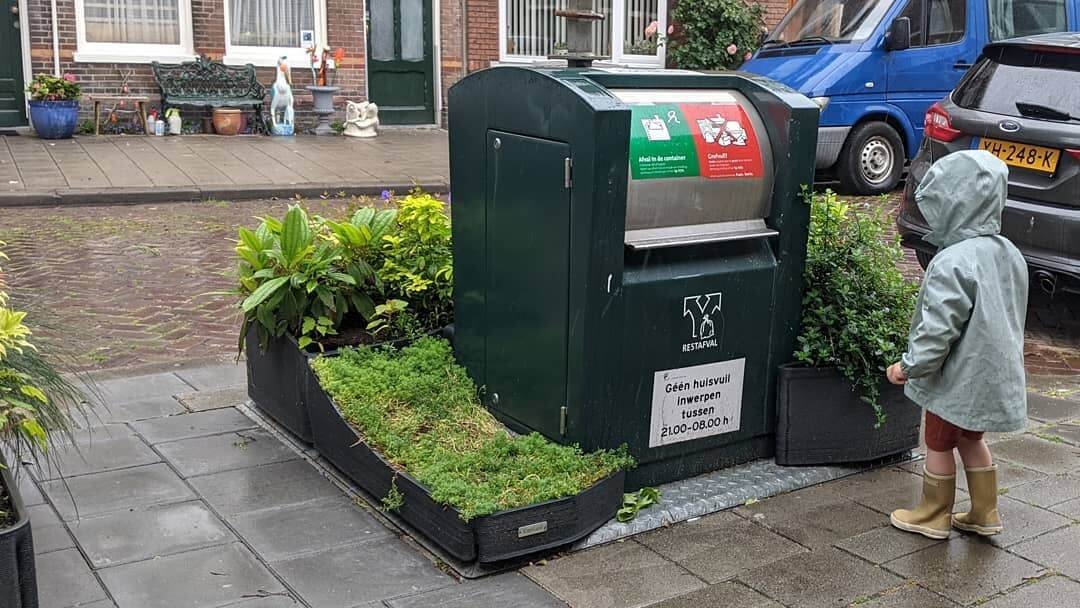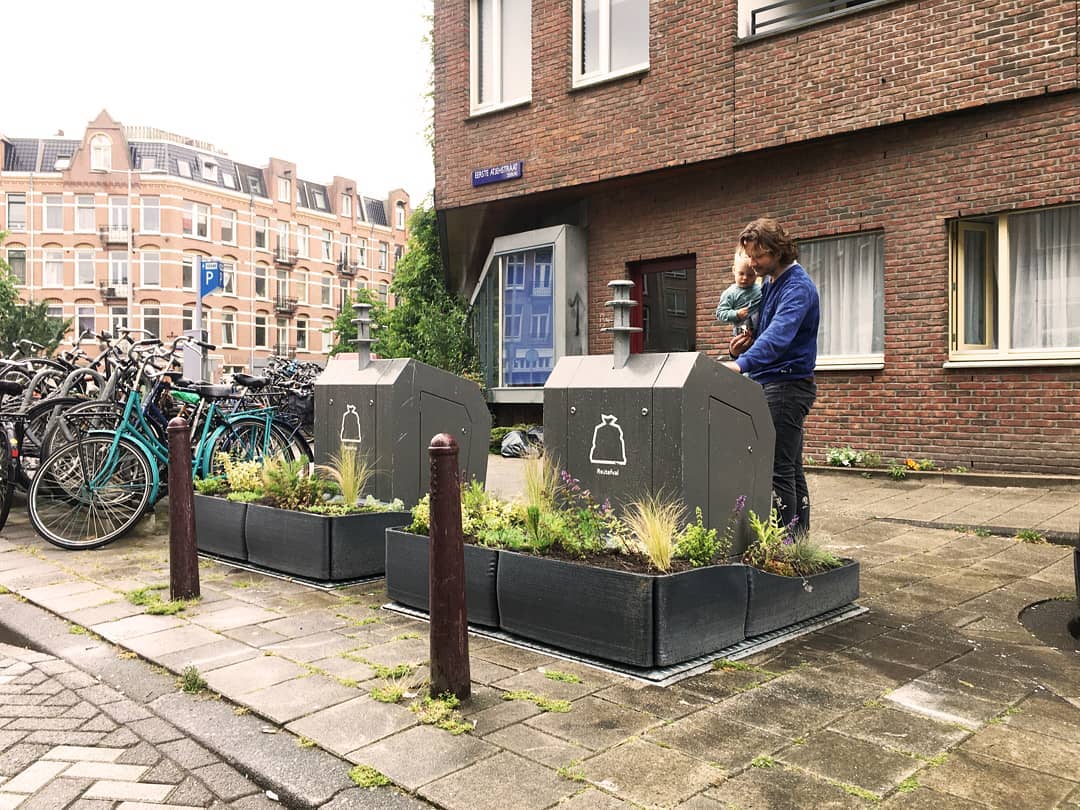Prioritising the places and people that need it the most
Mini garden around trash cans for Tirana
Transforming Waste Areas into Green, Clean, and Livable Urban Spaces
The project reimagines waste collection areas by transforming them into clean, green, and visually appealing urban spaces. Using low-maintenance plants, and community engagement, we turn neglected trash zones into eco-friendly hubs. This project enhances urban aesthetics, improves air quality, and fosters a healthier, more sustainable city for everyone.
Albania
Local
Tirana, the capital city of Albania
Mainly urban
It refers to a physical transformation of the built environment (hard investment)
Early concept
No
No
As a representative of an organisation
Trash littering is a common problem in Albania. I would like to give you a visual of a typical waste collection area in Albania: litter scattered everywhere, an overwhelming stench, people avoiding the area out of discomfort, and an unsightly scene that leaves a negative impression. Many tourists remark that Tirana has a waste problem, highlighting how unmanaged waste areas impact both the city’s reputation and the daily lives of its residents. Thus, we aim to transform these neglected waste collection points into aesthetic, sustainable, and community-friendly spaces. By integrating low-maintenance greenery and smart urban design, we create an environment where waste areas are no longer places to avoid but rather seamlessly integrated, functional, and visually acceptable parts of the city. This initiative enhances urban well-being, promotes environmental responsibility, and fosters a healthier relationship between people and their surroundings.
The project targets urban residents living near waste collection areas, local municipalities responsible for waste management, community groups and schools engaged in urban sustainability efforts, and architects and urban planners invested in green city innovations. Through the use of drought-resistant plants, vertical green walls, and well-integrated bin enclosures, the project significantly improves the visual and environmental quality of these areas. The project encourages better waste disposal habits through clear signage and community involvement, fostering a sense of ownership and responsibility among residents. The approach is scalable and can be easily replicated in other cities across Albania and beyond.
This aligns with the NEB values of sustainability, inclusion, and aesthetics. By using native, drought-resistant plants and upcycled materials, it minimizes maintenance and water use. The project actively engages communities, particularly in areas where investment in urban aesthetics and sustainability.
The project targets urban residents living near waste collection areas, local municipalities responsible for waste management, community groups and schools engaged in urban sustainability efforts, and architects and urban planners invested in green city innovations. Through the use of drought-resistant plants, vertical green walls, and well-integrated bin enclosures, the project significantly improves the visual and environmental quality of these areas. The project encourages better waste disposal habits through clear signage and community involvement, fostering a sense of ownership and responsibility among residents. The approach is scalable and can be easily replicated in other cities across Albania and beyond.
This aligns with the NEB values of sustainability, inclusion, and aesthetics. By using native, drought-resistant plants and upcycled materials, it minimizes maintenance and water use. The project actively engages communities, particularly in areas where investment in urban aesthetics and sustainability.
Sustainability
Urban Aesthetics
Waste Management
Community Engagement
Green Infrastructure
This project turns neglected waste areas into clean, green, and low-maintenance spaces using drought-resistant plants and upcycled materials. The project reduces pollution, improves waste sorting habits, and requires minimal resources to maintain. By creating a scalable and replicable model, it offers a sustainable, long-term solution for urban waste problems. This project focuses on low-income neighborhoods where waste collection points are often neglected. By involving local residents, municipalities, and urban planners, we encourage community ownership and responsibility. It improves daily life for residents and creates safer, cleaner, and more welcoming public spaces for everyone. Waste areas are often ugly and avoided. This project blends greenery with urban design to turn them into pleasant, functional spaces. Using climbing plants, shrubs, and modular green walls, the project softens harsh visuals and makes public spaces more attractive. It sets a new standard for how waste areas can be both practical and beautiful, reflecting the values of the New European Bauhaus.
This project transforms waste collection areas from dirty, neglected spaces into clean, green, and visually appealing urban elements. Instead of being hidden or avoided, these areas become integrated into the city’s landscape, improving the overall experience for residents and visitors.
The project introduces drought-resistant plants and climbing greenery to soften harsh urban visuals. Vertical gardens, artistic enclosures, and thoughtful urban design make these spaces blend seamlessly into their surroundings. This approach reduces visual pollution while making public areas more inviting.
The cultural impact of this project is also significant. Waste areas often reflect how a city values its public spaces. By improving these sites, the project changes perceptions of urban cleanliness and responsibility. It also fosters a sense of civic pride, encouraging people to care more about their neighborhoods.
Beyond aesthetics, the project enhances the experience of walking and living in the city. Instead of passing by overflowing, unpleasant trash bins, people will see small green hubs that add life to their environment. This approach is replicable across different urban areas, making it an exemplary model for improving waste spaces in cities everywhere.
The project introduces drought-resistant plants and climbing greenery to soften harsh urban visuals. Vertical gardens, artistic enclosures, and thoughtful urban design make these spaces blend seamlessly into their surroundings. This approach reduces visual pollution while making public areas more inviting.
The cultural impact of this project is also significant. Waste areas often reflect how a city values its public spaces. By improving these sites, the project changes perceptions of urban cleanliness and responsibility. It also fosters a sense of civic pride, encouraging people to care more about their neighborhoods.
Beyond aesthetics, the project enhances the experience of walking and living in the city. Instead of passing by overflowing, unpleasant trash bins, people will see small green hubs that add life to their environment. This approach is replicable across different urban areas, making it an exemplary model for improving waste spaces in cities everywhere.
The project focuses on improving waste areas in neighborhoods that need it most, particularly low-income communities where public spaces are often neglected. By turning these areas into clean, green spaces, the project creates a better living environment for everyone, not just a privileged few.
The design is accessible to all—no barriers, no restrictions. Everyone benefits from cleaner, more inviting public spaces. The project is affordable and low-maintenance, using drought-resistant plants and recycled materials, making it easy for municipalities to adopt and scale.
The project also encourages community involvement. Local residents help shape the redesign of their waste areas, giving them a sense of ownership and responsibility. It promotes shared governance, ensuring the project reflects the needs of the people who use these spaces daily.
By improving these areas, the project creates safer, healthier spaces that are welcoming for all, including children, elderly people, and marginalized groups. The project proves that waste areas can be more than just functional—they can be inclusive, accessible, and beneficial for everyone.
The design is accessible to all—no barriers, no restrictions. Everyone benefits from cleaner, more inviting public spaces. The project is affordable and low-maintenance, using drought-resistant plants and recycled materials, making it easy for municipalities to adopt and scale.
The project also encourages community involvement. Local residents help shape the redesign of their waste areas, giving them a sense of ownership and responsibility. It promotes shared governance, ensuring the project reflects the needs of the people who use these spaces daily.
By improving these areas, the project creates safer, healthier spaces that are welcoming for all, including children, elderly people, and marginalized groups. The project proves that waste areas can be more than just functional—they can be inclusive, accessible, and beneficial for everyone.
The project actively involves local residents, civil society, and urban planners in transforming waste areas. Instead of a top-down approach, people help shape the redesign, making sure solutions fit their needs and feel like part of the community.
Residents give feedback through consultations deciding on plant choices and layout. Their involvement creates a sense of ownership, leading to better care and waste management.
Civil society organizations support such as Active Mobility assist by raising awareness, educating on waste management, and mobilizing volunteers. Schools and youth groups also participate, teaching children environmental responsibility from an early age.
This collaboration makes the project affordable, practical, and long-lasting. People respect and maintain spaces they helped create. The result is a cleaner, greener, and more functional city where waste areas blend into urban life rather than being ignored or avoided.
Residents give feedback through consultations deciding on plant choices and layout. Their involvement creates a sense of ownership, leading to better care and waste management.
Civil society organizations support such as Active Mobility assist by raising awareness, educating on waste management, and mobilizing volunteers. Schools and youth groups also participate, teaching children environmental responsibility from an early age.
This collaboration makes the project affordable, practical, and long-lasting. People respect and maintain spaces they helped create. The result is a cleaner, greener, and more functional city where waste areas blend into urban life rather than being ignored or avoided.
The project involves local, regional, national, and European stakeholders to ensure impact and scalability.
At the local level, municipalities provide space and technical support, while residents and civil society shape the design and maintain the spaces. Schools help educate the community.
At the regional level, urban development organizations offer expertise on sustainability and best practices.
At the national level, government agencies support policy alignment and funding opportunities.
At the European level, green city networks provide visibility, funding, and policy guidance, ensuring the project fits EU sustainability goals.
This collaboration adds value by securing resources, improving implementation, and making the project scalable across cities.
At the local level, municipalities provide space and technical support, while residents and civil society shape the design and maintain the spaces. Schools help educate the community.
At the regional level, urban development organizations offer expertise on sustainability and best practices.
At the national level, government agencies support policy alignment and funding opportunities.
At the European level, green city networks provide visibility, funding, and policy guidance, ensuring the project fits EU sustainability goals.
This collaboration adds value by securing resources, improving implementation, and making the project scalable across cities.
The project integrates urban planning, landscape architecture, environmental science, waste management, and community engagement to create sustainable and functional green spaces around waste collection areas.
Urban planners and landscape architects design the layout, ensuring waste areas blend with the city while remaining accessible and practical. Environmental scientists select low-maintenance plants that improve air quality and require minimal resources. Waste management experts ensure proper bin placement, signage, and recycling efficiency. Community engagement specialists work with residents to foster ownership and responsible use of the space.
Collaboration between these fields ensures a holistic approach, balancing aesthetics, functionality, and sustainability. By working together, experts optimize design, increase social acceptance, and ensure long-term success, making the project scalable and adaptable to different urban areas.
Urban planners and landscape architects design the layout, ensuring waste areas blend with the city while remaining accessible and practical. Environmental scientists select low-maintenance plants that improve air quality and require minimal resources. Waste management experts ensure proper bin placement, signage, and recycling efficiency. Community engagement specialists work with residents to foster ownership and responsible use of the space.
Collaboration between these fields ensures a holistic approach, balancing aesthetics, functionality, and sustainability. By working together, experts optimize design, increase social acceptance, and ensure long-term success, making the project scalable and adaptable to different urban areas.
Traditional waste collection areas are neglected, poorly designed, and visually unappealing, leading to littering, bad odors, and public complaints. Most waste management efforts focus only on bin placement and collection, without considering aesthetics, community involvement, or sustainability.
This project goes beyond mainstream practices by integrating urban greenery, design, and behavioral change into waste management. Instead of treating waste areas as isolated, unpleasant spaces, the project turns them into clean, green, and visually acceptable parts of the city. The use of drought-resistant plants, modular green walls, and smart bin placement makes it low-maintenance, cost-effective, and environmentally friendly.
Another innovative aspect is community involvement. Residents and local organizations actively participate in the transformation, creating a sense of ownership and long-term care, unlike typical waste management solutions that are purely technical.
This approach reshapes public perception of waste collection areas, proving they can be both functional and beautiful.
This project goes beyond mainstream practices by integrating urban greenery, design, and behavioral change into waste management. Instead of treating waste areas as isolated, unpleasant spaces, the project turns them into clean, green, and visually acceptable parts of the city. The use of drought-resistant plants, modular green walls, and smart bin placement makes it low-maintenance, cost-effective, and environmentally friendly.
Another innovative aspect is community involvement. Residents and local organizations actively participate in the transformation, creating a sense of ownership and long-term care, unlike typical waste management solutions that are purely technical.
This approach reshapes public perception of waste collection areas, proving they can be both functional and beautiful.
The project follows a human-centered, design-driven, and sustainability-focused approach to transform waste collection areas into clean, green, and community-friendly spaces.
The process starts with site selection and analysis, identifying waste collection areas with high littering and visual pollution. Community engagement follows, where local residents, businesses, and urban planners provide input through workshops and surveys. This ensures the transformation reflects local needs and concerns.
Next, urban design and landscaping experts develop solutions, incorporating low-maintenance greenery, modular green walls, and better waste bin placement. The design is aesthetically appealing, functional, and easy to maintain, using drought-resistant plants and recycled materials to ensure sustainability.
Once implemented, the project includes education and awareness campaigns to promote better waste habits and encourage long-term care by the community. Local organizations and schools help with monitoring and maintaining the transformed areas, fostering a sense of ownership.
This collaborative and scalable methodology ensures that waste areas become attractive, functional, and integrated into the urban landscape, setting a new standard for sustainable urban waste management.
The process starts with site selection and analysis, identifying waste collection areas with high littering and visual pollution. Community engagement follows, where local residents, businesses, and urban planners provide input through workshops and surveys. This ensures the transformation reflects local needs and concerns.
Next, urban design and landscaping experts develop solutions, incorporating low-maintenance greenery, modular green walls, and better waste bin placement. The design is aesthetically appealing, functional, and easy to maintain, using drought-resistant plants and recycled materials to ensure sustainability.
Once implemented, the project includes education and awareness campaigns to promote better waste habits and encourage long-term care by the community. Local organizations and schools help with monitoring and maintaining the transformed areas, fostering a sense of ownership.
This collaborative and scalable methodology ensures that waste areas become attractive, functional, and integrated into the urban landscape, setting a new standard for sustainable urban waste management.
The project is easily replicable in any urban area facing challenges with neglected waste collection points. Its simple, low-cost approach makes it adaptable across different cities, neighborhoods, and cultural contexts.
The methodology of community engagement and urban greenery integration can be applied in various settings, from residential neighborhoods to commercial districts. Low-maintenance plants and recycled materials ensure affordability and sustainability, making it feasible for cities with limited resources.
The design process—involving local residents, urban planners, and environmental experts—can be replicated in other communities to ensure local adaptation and long-term care. The project’s success in improving public perception of waste management can inspire municipalities and organizations across Europe to rethink their approach to urban waste spaces.
The project also generates valuable learning experiences, including best practices in urban design, behavior change, and green infrastructure, which can be shared with other cities. By proving that waste collection areas can be transformed into clean, green urban elements, this initiative sets a new standard for sustainable urban waste management, encouraging its widespread adoption.
The methodology of community engagement and urban greenery integration can be applied in various settings, from residential neighborhoods to commercial districts. Low-maintenance plants and recycled materials ensure affordability and sustainability, making it feasible for cities with limited resources.
The design process—involving local residents, urban planners, and environmental experts—can be replicated in other communities to ensure local adaptation and long-term care. The project’s success in improving public perception of waste management can inspire municipalities and organizations across Europe to rethink their approach to urban waste spaces.
The project also generates valuable learning experiences, including best practices in urban design, behavior change, and green infrastructure, which can be shared with other cities. By proving that waste collection areas can be transformed into clean, green urban elements, this initiative sets a new standard for sustainable urban waste management, encouraging its widespread adoption.
The project addresses urban waste pollution, environmental degradation, and climate resilience by transforming neglected waste areas into clean, green, and functional spaces. Poorly managed waste contributes to littering, odors, and health risks. By integrating greenery and community engagement, the project improves waste management while enhancing urban aesthetics. It helps cities combat urban heat islands, improves air quality, and creates more inclusive and livable spaces, especially in low-income areas. The project challenges the perception of waste spaces as ugly and unavoidable, proving they can be functional, clean, and visually appealing. This local approach provides a scalable and replicable model for cities worldwide, supporting global efforts for greener, healthier urban environments.
The project is ready to turn the concept into reality. Over the next year, it will focus on piloting waste area transformations, involving the community, and securing partnerships for future expansion.
The first step is choosing locations and finalizing designs with municipalities and residents. Once selected, the project will add greenery, improve bin placement, and install educational signage to promote better waste habits.
Local people will play a key role through awareness campaigns, school projects, and volunteer activities to keep the areas clean and maintained. Partnerships with organizations will help expand the idea and secure funding.
The project will track progress with before-and-after photos, data on waste habits, and community feedback to show its impact. By the end of the first year, the goal is to prove that waste spaces can be clean, green, and a part of the city, not just a problem.
The first step is choosing locations and finalizing designs with municipalities and residents. Once selected, the project will add greenery, improve bin placement, and install educational signage to promote better waste habits.
Local people will play a key role through awareness campaigns, school projects, and volunteer activities to keep the areas clean and maintained. Partnerships with organizations will help expand the idea and secure funding.
The project will track progress with before-and-after photos, data on waste habits, and community feedback to show its impact. By the end of the first year, the goal is to prove that waste spaces can be clean, green, and a part of the city, not just a problem.

